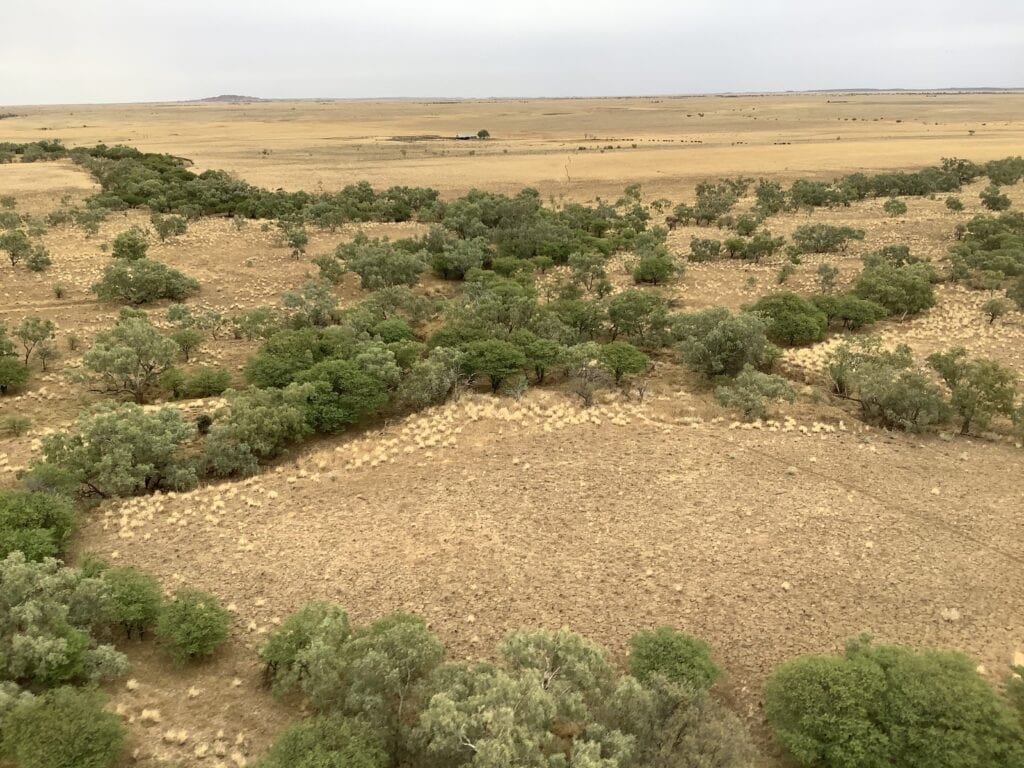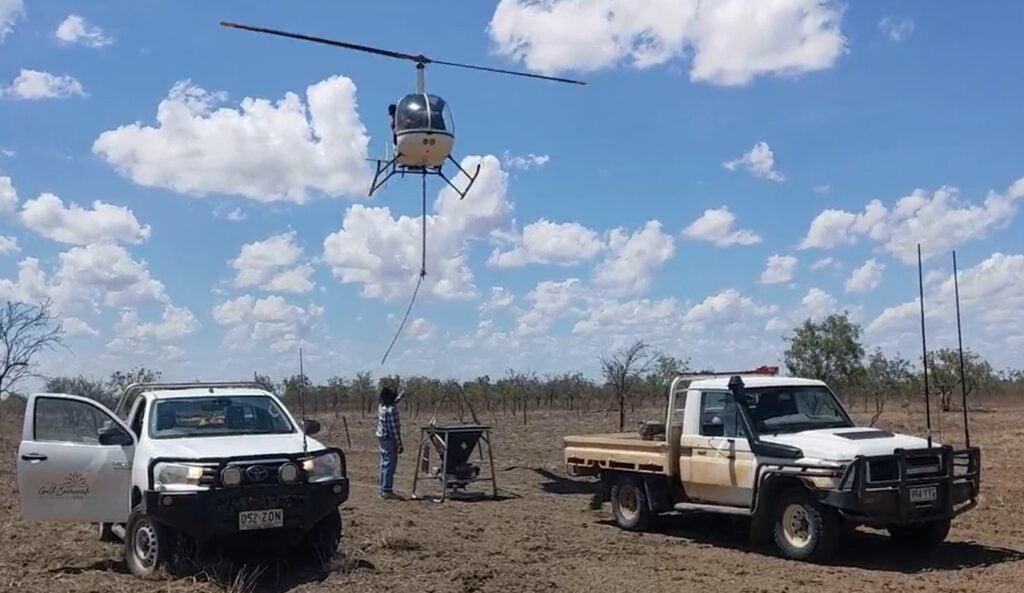Prickly Acacia is the scourge of the Southern Gulf region’s pastoral industry. Introduced originally as a shade tree and for drought fodder, it has proven to be all too successful, infesting millions of hectares of valuable grazing country.
The February 2019 monsoon floods caused prickly acacia incursions across nearly all extensive grazing properties in the region. Combined with favourable wet seasons in the following years, this exacerbated the extent, spread, and density of the weed.
As the shrub grows, it outcompetes pasture for water, and its thorny thickets interfere with mustering, movement of stock, and access to water. It also eliminates valuable pasture grasses, impacting native species that rely on grassland ecosystems.
The Australian Government’s Prickly Acacia Weed Management Program funded projects across ten prickly acacia weed management zones, with 54 properties participating. This work focused on managing prickly acacia regrowth, including the use of a helicopter-mounted weed sniper to treat scattered infestations on properties.
Over the course of the project, prickly acacia incursions were treated over an area of 70,000 hectares.
Thousands of prickly acacias ‘no more’
Since receiving federal funding following the 2019 Queensland floods, Desert Channels Queensland (DCQ) has worked alongside landowners to provide direct, on-farm treatment across 215,000 hectares of infestation.
Crucially, this project kicked landowners into gear by putting prickly acacia front-of-mind and empowering DCQ to work alongside them to see real reductions in weed spread.
In 2015, only 11% of landowners were actively controlling prickly acacia weeds on their properties. Now, 80% (348 landowners) are engaged in control measures.
Desert Channels Queensland’s Project Manager Geoff Penton said collaboration between the Commonwealth Government, regional NRM organisations and landowners was vital for achieving these results.
‘We’ve seen a massive increase in participation from landholders, and because of that the weed is now being killed much faster than it can ever reproduce.’
‘Even where we’ve seen some really good seasons like we saw in 2023, the germination of prickly acacia seed has been minimal,’ Mr Penton said.
The project has also enabled new innovations, including combining machine learning with drone mapping to automate detection of prickly acacia and partnering with industry to trial a new herbicide for more effective and efficient control. Find out more.

Prickly acacia competes with native Mitchell grass and turns prime livestock pastures into thorny scrubland. This threatens biodiversity, erodes soils, and hinders mustering efforts.
Not just the Southern Gulf
Gulf Savannah NRM has also been managing new and isolated prickly acacia incursions in the Northern Gulf region.
The federally-funded project has conducted extensive aerial reconnaissance along the Einasleigh and Gilbert rivers, downstream of known incursions. Find out more.
‘The project has significantly increased our data on the locations of incursions, and we’ve made substantial progress in treating the spread,’ Gulf Savannah NRM’s Marcus Mulholland said.

Prickly Acacia projects have used helicopters for reconnaissance and treatment in the fight against this invasive weed.
